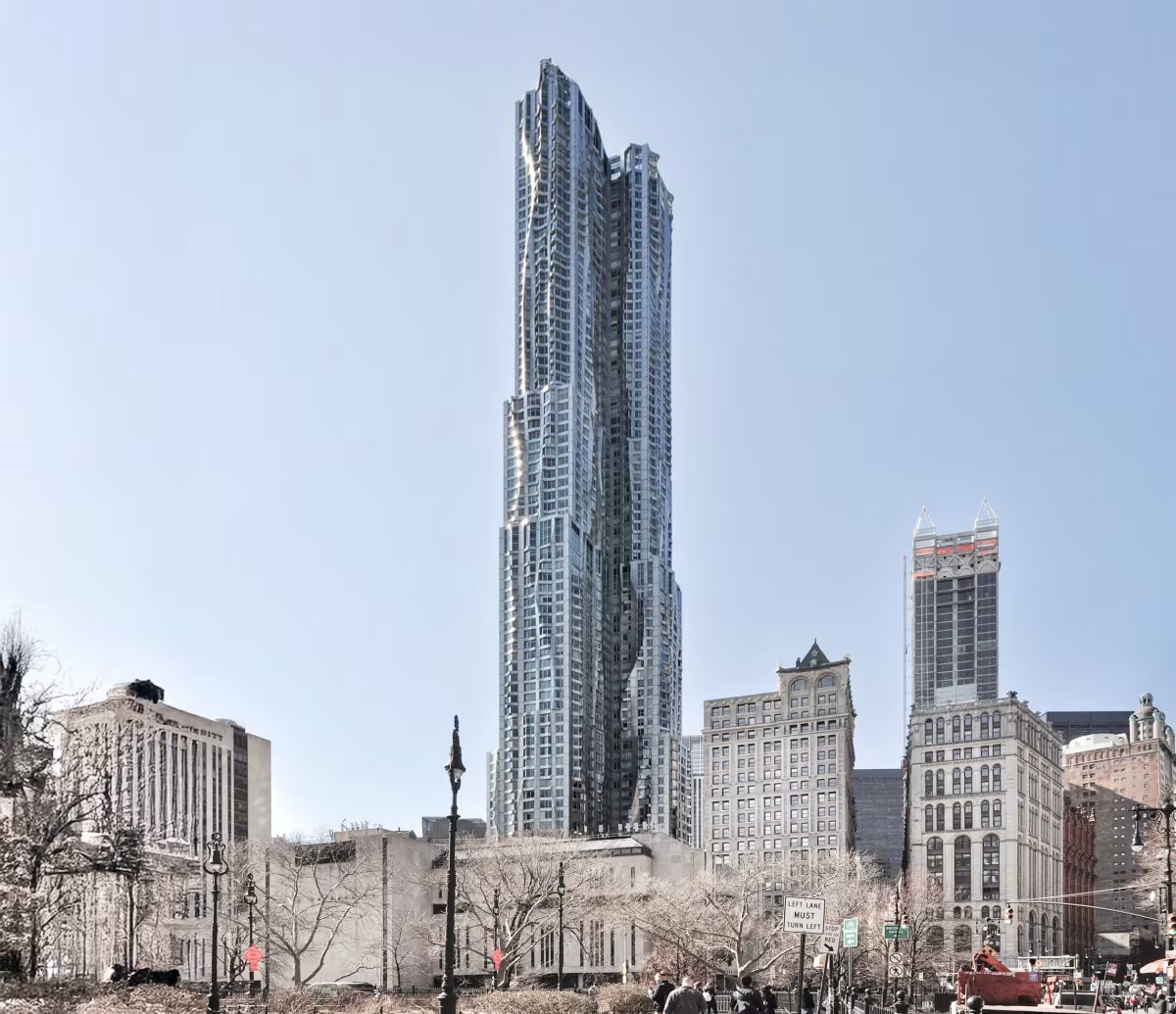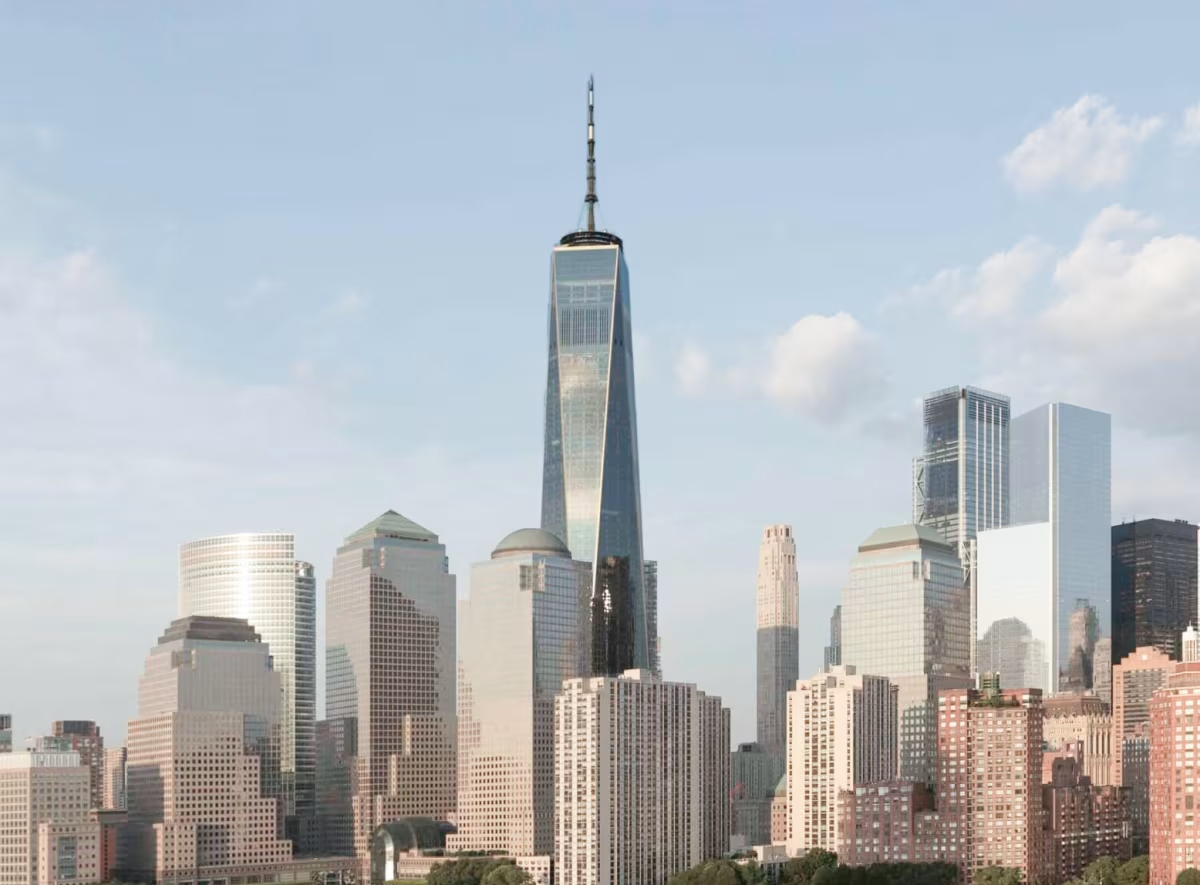8 Spruce Street Building vs One World Trade Center


Comparing the 8 Spruce Street Building and the One World Trade Center is interesting because they both stand in New York, NY, and were completed within 4 years of each other, but they were designed by different architects.
This offers a unique glimpse at how rival designers approached projects in the same city during the same era.
Height & Size
The One World Trade Center is clearly the larger tower of the two, both in terms of height and number of floors. It rises to 1775ft (541m) with 104 floors above ground, while the 8 Spruce Street Building reaches 869ft (265m) with 76 floors above ground.
Of course, each project may have faced different briefs or regulatory constraints, which we don't really know about and could also explain the outcome.
Architectural Style
Both the 8 Spruce Street Building and the One World Trade Center were designed in line with the aesthetic conventions of the Contemporary style.
At the time, this style was at the height of its popularity. So both Frank Gehry and Skidmore, Owings & Merrill followed what was in many ways expected of them, producing designs that fit comfortably within contemporary architectural norms, rather than breaking with convention.
Uses
The 8 Spruce Street Building is primarily residential, while the One World Trade Center is primarily commercial.
The 8 Spruce Street Building offers 899 residential units.
The 8 Spruce Street Building also provides 175 parking spaces.
Structure & Facade
The two towers rely on different structural systems, reflecting distinct engineering strategies.
The 8 Spruce Street Building uses a Frame structural system, which relies on a regular grid of columns and beams to sustain its weight, while the One World Trade Center uses a Framed Tube In Tube system, that combines a strong central core with a perimeter tube of columns.
Yet, when it comes to their facade, they both employed the same solution, a Curtain Wall facade.
A curtain wall is a non-load-bearing facade hung from the structural frame. It is anchored to floor slabs and transfers only its own weight and wind loads, allowing for sleek, glassy exteriors.
| 8 Spruce Street Building | One World Trade Center | |
|---|---|---|
| Frank Gehry | Architect | Skidmore, Owings & Merrill |
| 2003 | Design Started | 2005 |
| 2005 | Design Ended | 2007 |
| 2006 | Construction Started | 2006 |
| 2010 | Year Completed | 2014 |
| Contemporary | Architectural Style | Contemporary |
| Residential | Current Use | Commercial |
| 76 | Floors Above Ground | 104 |
| 1 | Floors Below Ground | 5 |
| 252 | Last Floor Height | 386 |
| 265 m | Height (m) | 541 m |
| 272 | Tip Height | 546 |
| Frame | Structure Type | Framed Tube In Tube |
| Reinforced Concrete | Vertical Structure Material | Steel |
| Reinforced Concrete | Horizontal Structure Material | Poured Concrete Over Metal Decking |
| No | Facade Structural? | No |
| Glass, Steel | Main Facade Material | Glass, Steel |
| Kreisler Borg Florman | Main Contractor | Tishman Construction |
| Forest City Ratner Companies | Developer | Port Authority Of New York And New Jersey |
| Field Operations | Landscape Architect | Mathews Nielsen Landscape Architects And Architects Peter Walker Landscape Architecture |
| Jaros Baum & Bolles | MEP Engineer | Jaros Baum & Bolles |
| WSP Cantor Seinuk | Structural Engineer | WSP Group |
| Permasteelisa Group | Facade Consultant | Isreal Berger And Associates |
| NY | State | NY |
| New York | City | New York |
| 8 Spruce Street | Address | 285 Fulton Street |